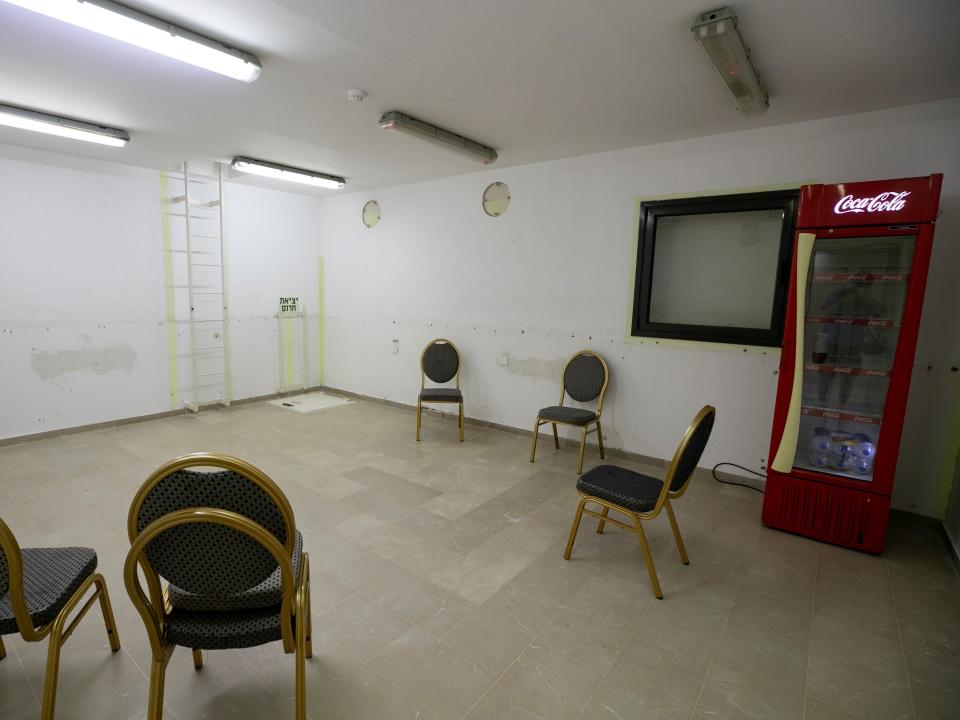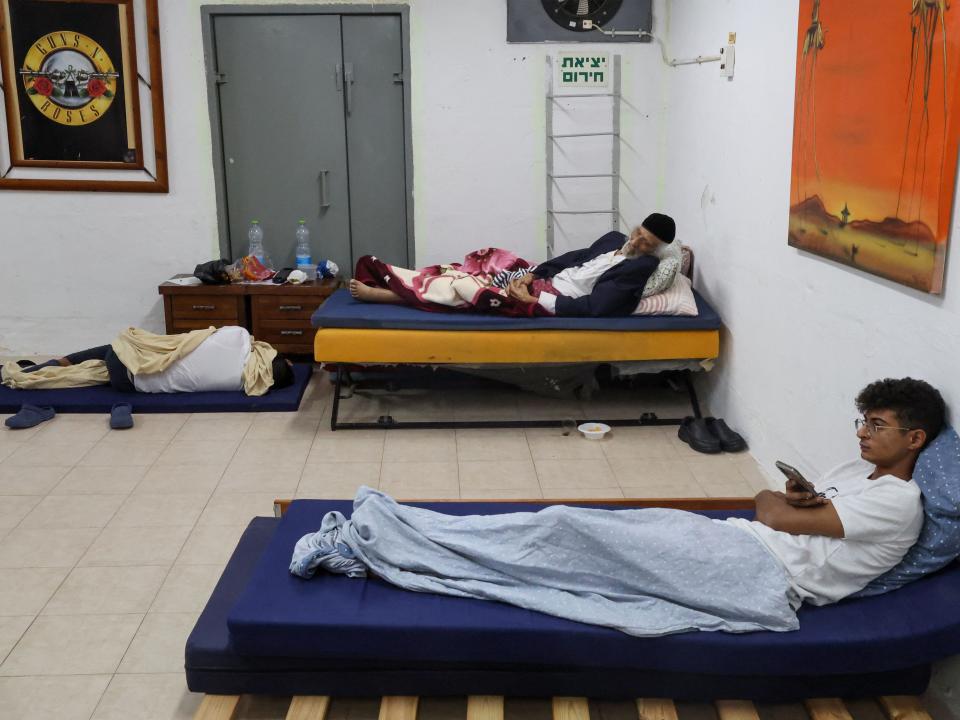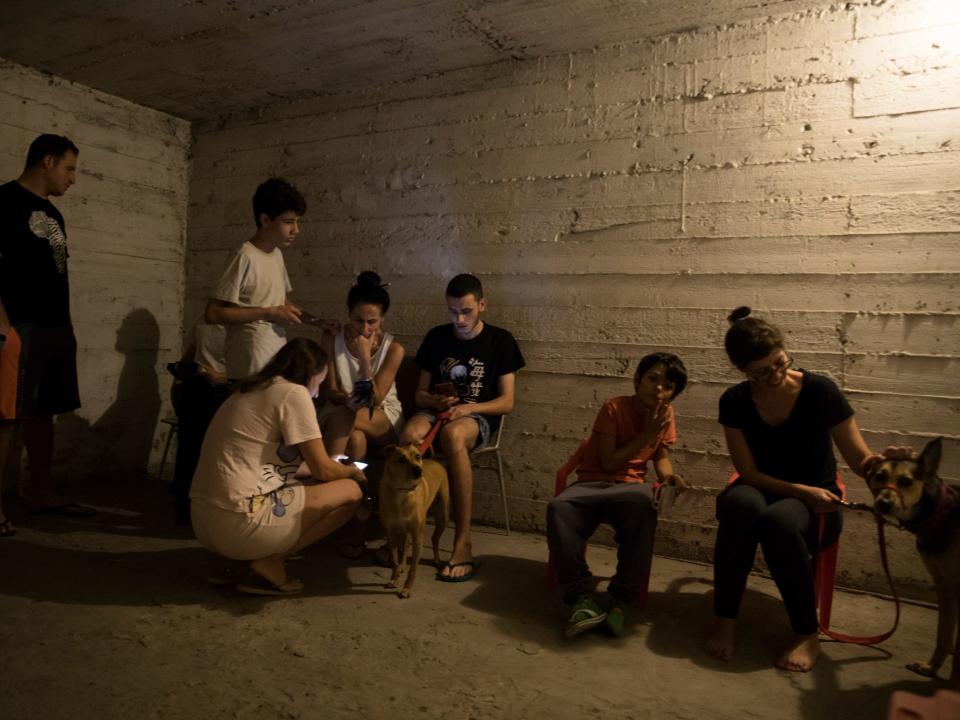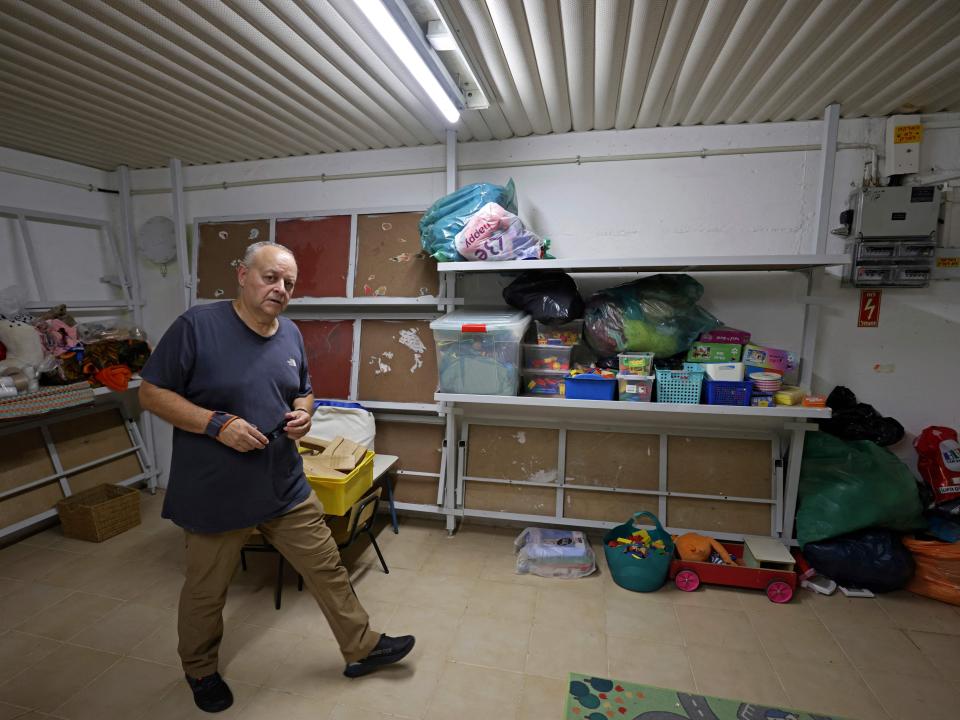Safe rooms in Israel are everywhere, with steel doors and sparse furnishings. Here's what they're like inside.

Buildings erected in Israel since the 1990s have built-in safe rooms to avoid bombs and air strikes.
Residents told Insider what they're like, showing spaces with sparse furnishings and barricaded entries.
While safe rooms are commonplace in Israel, they're essentially non-existent in Gaza.
Residents all over Israel are making use of emergency shelters in their homes and public spaces as the war between Israel and the militant group Hamas escalates. Air raid sirens warning of rocket attacks blare without warning at all hours, giving Israelis just 60 seconds to find shelter.
It's commonplace for homes in Israel to have a specially-built safe room inside to shelter in place after a law was introduced in 1992 by the Israel Defense Forces' Home Front Command, establishing new civil defense regulations.
The regulations required the inclusion of a residential protected room, a communal protected space, or an institutional protected space in every newly constructed building.
Residents of Israel said that, inside, the safe rooms are often just like an extension of the home, sometimes appointed like a living room or bedroom, while others are more sparsely furnished. They often have steel doors with reinforced locks, thick walls of concrete and, if there are windows, they're made of shatter-proof glass.

Reut Aisenberg, a resident of east Tel Aviv, told Insider, that "almost everyone," has a safe room in Israel, adding that, while some people keep dried food and other supplies inside, they're "not meant for you to live in for weeks."
"The rooms are meant to keep you safe from rockets," Aisenberg said. "They are not meant to keep you inside for days at a time. You don't have toilets, you don't have water."
While the rooms aren't equipped for long-term sheltering in place, they're still life-saving in an emergency. Insider previously reported on the account of a pregnant mother who hid with her small child inside their safe room while Hamas militants tried, and failed, to get inside.

When the sirens sound, the goal is to move as quickly as possible to the safe room, Sacha Roytman Dratwa, the CEO of Combat Antisemitism Movement and a resident of Tel Aviv, told Insider. Inside, you stay low and quiet, listening to hear how close the fighting is.
"The procedure is going to the shelter with the kids, with everyone. I think the most complicated part is to explaining to the kids what's happening — that you have an enemy, but you don't want to create animosity in your kids," Dratwa said. "You don't want to make your enemy sound so bad. You don't want to tell what they did to people of the same age as them, so I think the kids are the most complicated part. You need to educate them in this time of war to not create more animosity because you want to build for them a better future."
But Israel's safe rooms aren't foolproof in preventing break-ins, and they can't protect citizens who aren't able to get inside fast enough in the midst of the fighting. So far, at least 1,200 Israelis have died, and another 3,000 injured since the surprise attack on Saturday, according to early Wednesday estimates published by The Jerusalem Post.

"Today I had to take my daughter to the doctor," Aisenberg told Insider. "I had a dilemma, should I take a car, which would take me 5 minutes, or should I walk? Now it's a time where no one should be outside if they don't have a good reason. Even if the car would take there faster, if a siren would go off, I would have to stop the car and get to a safe place. This is going to cost me at least 30 seconds, and this is a waste of precious time."
She added: "If we walk to the clinic, maybe I spend more time outside, but if there is a siren, I can grab my baby and run to one of the buildings. And then I don't waste precious time. This is the kind of cuckoo mathematics Israelis are doing on a daily basis."
While this is the kind of math residents of Israel are doing with widespread access to emergency shelters, those living in Gaza are making different calculations — as they are left wildly unprotected in the face of Israeli counter-strikes, which have left at least 900 Palestinians dead and 4,250 wounded since the start of the escalation on October 7.

"People in Gaza do not have safe rooms or shelters," Tahani Mustafa, senior Palestine analyst at International Crisis Group told Insider, adding that the "only shelters they have are UNRWA schools that are currently holding more than 200,000 displaced people," referring to temporary shelters developed by the United Nations Relief and Works Agency for Palestine Refugees in the Near East.
In a Sunday statement formally declaring war against Hamas, Lt. Col. Richard Hech of the Israel Defense Forces said the Israeli military has one goal in mind as it bombards targets in Gaza: "To control the entire enclave and kill all the terrorists in our territory."
Israel's ferocious counter-attacks against Hamas have leveled entire buildings in Gaza, reducing portions of the Palestinian territory to rubble. Residents, left without protection, describe fleeing from their homes along with thousands of other residents, with no idea what will happen each minute or how they will get food or water.
"I lived in Gaza for a year and a half. Gaza is the most densely populated place on earth. There are no shelters in Gaza. There is no place to go when Israel bombs," Diana Buttu, a lawyer and analyst, told Insider. "There are no safe spaces. Israel has bombed mosques, hospitals, universities, and schools, including UN facilities. But even worse is that the equipment that is needed to build such safe spaces is banned by Israel. In short, people are sitting ducks waiting for a bomb to be dropped on their heads."
Read the original article on Business Insider


